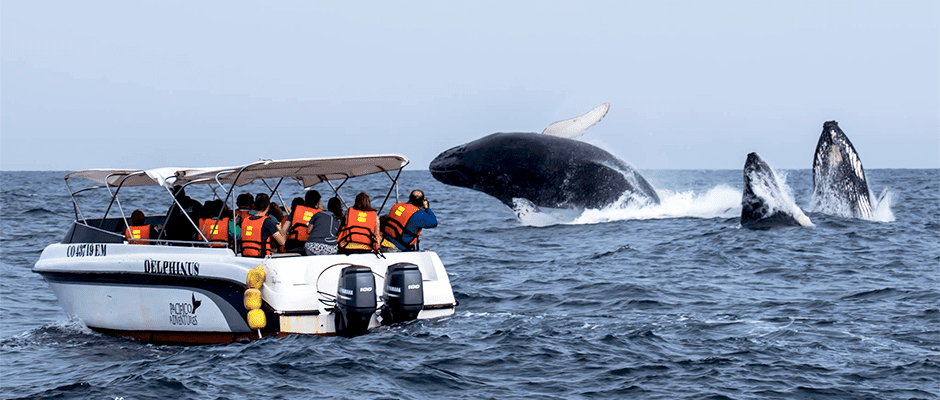Share this article
JWM: Whale watching affects mothers and calves in Peru
Whale-watching has been a fast-growing tourist activity in Peru. The country’s 2,414-kilometer coastline gives visitors plenty of access to humpback whales (Megaptera novaeangliae) in the waters where they nurse during the Southern Hemisphere’s winter and spring.
But the activity’s popularity has outpaced legislation, researchers found, and the swarm of boats motoring close to the whales can affect their behavior — particularly the behavior of calves with their mothers, which tend to be closer to the shoreline, are easier for boats to access and provide tourists an exciting attraction.
“Whale‐watching regulations must be implemented in Peru to regulate number of boats, distance to whales, approximate speed and time observing humpback whales,” researchers wrote in a recent study published in the Journal of Wildlife Management. “Whale‐watching of humpback whales with calves should be avoided.”
It’s a balancing act, said lead author Ana M. García-Cegarra, who studied the whales as part of her graduate work at the Universidad de Antofagasta in Chile. Whale-watching can increase public interest in conservation, but unregulated, it can impact the whales.
“People really like to see the whales,” García-Cegarra said, “but they realize that the boats are too close to the whales. They worry about the speed and the noise of the motor.”
Poised on a cliff 31 meters about sea level in northern Peru, she and her team measured the whales’ breathing frequency, surface time, long dive duration, path linearity and swimming speeds before during and after encounters with whale-watching boats. During 167 hours of observation, they tracked 180 humpback whale groups, with and without calves.
The biggest impact was with mother-calf groups, they found. Calves would change their swimming speed, alter their paths and spend less time on the surface.
“When the mother and calf are together, the mother tries to push the calf to the surface,” García-Cegarra said. “This behavior is impacted by whale watching.”
Adult responses to the boats were more moderate, but researchers found they also changed their breathing, swimming speed and dive intervals when boats were present. How much this impacts the whales long-term is unknown, García-Cegarra said. Studies elsewhere have shown little impact, she said, but because the waters off Peru’s coast are a nursery area for the whales, the impacts may be more pronounced.
Whale watching got underway in Peru around 2009, García-Cegarra said, and since then, it has grown to about 16 boats carrying passengers to see the whales. Some provide scientific and environmental information to passengers. Others don’t. That can make all the difference to the message the public takes away, she said.
“People are willing to change their behavior and have more environmental awareness, but this is when the information provided on board is good,” García-Cegarra said. “If whale watching has biologist guides who communicate good information and try to enhance a pro-conservation attitude, people will get that and change their lifestyle. But the information has to be good. If you have whale watching with no biologists, no guides, no information, then you will have nothing.”
TWS members can log in to Your Membership to read this paper in the Journal of Wildlife Management. Go to Publications and then Journal of Wildlife Management.
Header Image: A whale-watching boat sits close to a trio of humpback whales off the Peruvian coast. ©Damian Villagra








